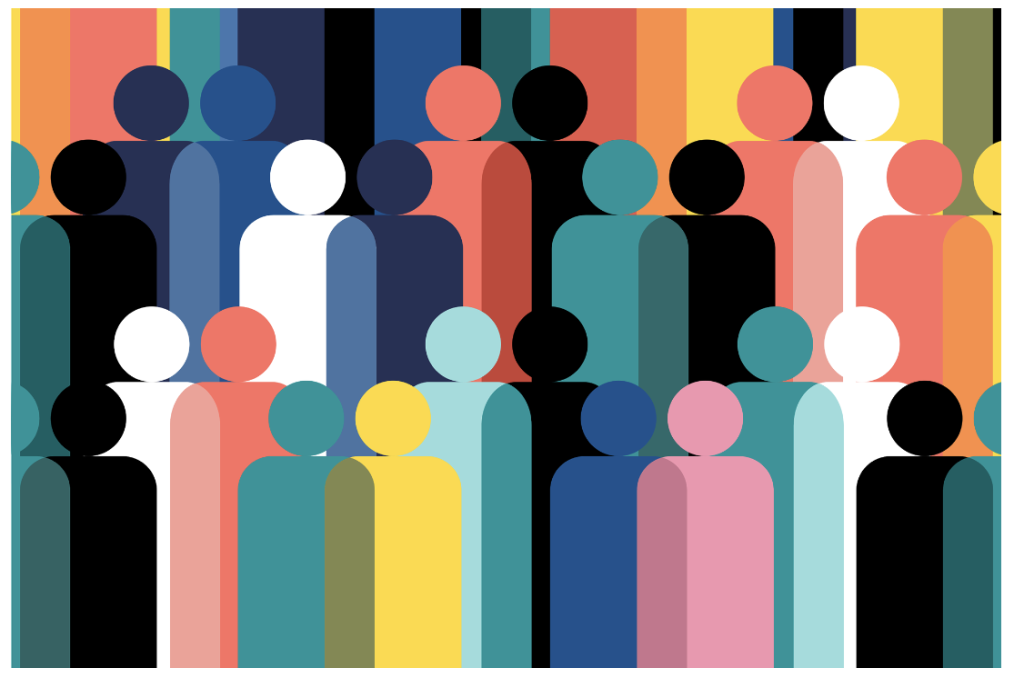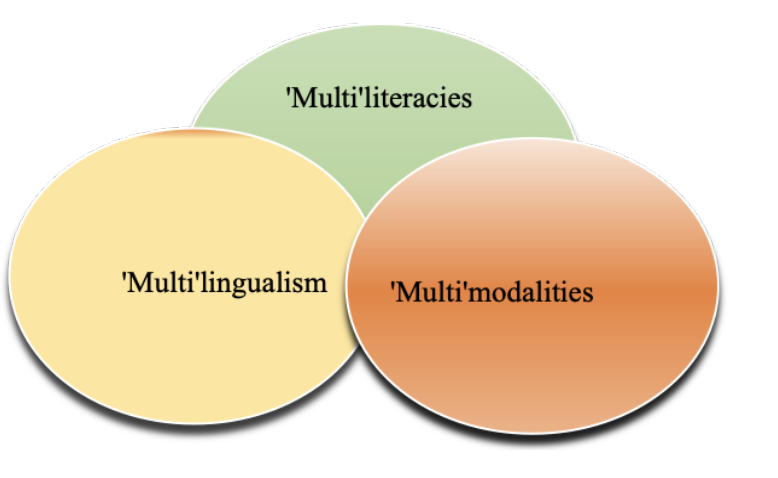

Equipped with Miami Linguistic Readers, Camino de la Escuela, and my own ingenuity, my young multilingual learners and I dived into what we believed were sound biliteracy practices. These leveled reading programs developed eons ago were lifeblood to a novice teacher like me who had been trained in Spanish as a “foreign language.” Although in the mid-1970s Illinois was one of the first states to inaugurate “transitional bilingual education,” there were no endorsed university programs nor empirical research on biliteracy that had been conducted in the US.
Was I qualified to teach literacy in one language, let alone two? Absolutely not, but I had a wonderful relationship with my students and their families and together we reached great heights. Over the years and several degrees later, as I continued my career as a bilingual teacher and coordinator, I became subject to any number of literacy initiatives. All of these were touted as the cure-all for the ongoing decline in national reading scores, in particular for minoritized students (as determined by large-scale achievement tests in English). I eventually became disillusioned with vacillating literacy mandates that had little applicability to my multilingual learners.
As a dedicated educator, I had had it instilled in me that literacy is the hallmark of education and the unwavering mark of success in school. Although the pendulum of teaching models and methodologies has swayed over the years, the prevailing conceptualization of literacy seems to have remained steadfast. Historically, literacy has been equated with the following features. It has been:
Text bound, dependent on print
Reflective of standard language
Restricted to rule-governed forms of language
Monoglossic (where language is divorced from context and monolingualism is valued over multilingualism) and monocultural
Despite this portrayal of literacy in the mainstream US, the reading wars over the most effective pedagogy for all students continue. Basically, for me, this conflict boils down to a polarity in linguistic thinking. Structural linguistics, which currently manifests as the science of reading, is perceived as a habit-formation process. It emphasizes language as a bound system of rules that consists of explicit connections among sounds, words, and sentences. At the other end of the continuum is sociocultural linguistics, which encompasses multiliteracies. It envisions the three Ls, literacy, language, and learning, as social activities that are situationally bound and geared to function, the overall purpose or meaning of a message. Sensitive to context, languages, and cultures, multiliteracies encompass a more comprehensive view of multilingual learners’ positionality as they seamlessly move across a variety of spaces. The Backdrop of Multiliteracies
The new millennium brought substantive change to the world of K–12 literacy that reverberates to this day. The National Reading Panel report of 2000 established five pillars of reading instruction—phonemic awareness, phonics, fluency, vocabulary, and comprehension—which became the basis of federal literacy policy for the Reading First initiative under the No Child Left Behind Act of 2002. Concomitantly, this reauthorization of the Elementary and Secondary Education Act stripped bilingualism from its pages, thereby also creating a de facto monolingual national language policy (Menken, 2008).
In 2006, “Developing Literacy in Second-Language Learners: Report of the National Literacy Panel on Language-Minority Children and Youth” (August and Shanahan, 2006) presented an extensive review of literacy-related research for this ever-growing group of students. Interestingly, it reiterates the findings of the prior panel, confirming the pillars of early literacy practices. However, it does go further in acknowledging that research on literacy instruction in the primary language has a positive effect on multilingual learners’ literacy achievement in English. Even though this analysis of literacy research centered on multilingual learners, it has been criticized as being filtered through a monolingual lens (Escamilla, 2009).
From Literacy to Multiliteracies
During this same time frame, the educational landscape was being transformed by a series of outside forces, which continue to inform the landscape to this day. Let’s reflect on how our lives have been altered over the past two decades. Radical changes have been brought about by two forces: 1) the sociocultural impact of natural phenomena, and 2) technological advances. These include (in no particular order):
Catastrophic events (9/11/2001, mass shootings, war)
Natural disasters (e.g., destructive hurricanes, volcanoes, earthquakes)
Physical and mental health crises
Racial and religious unrest
Technology tools (e.g., Chromebook, the tablet, cell phones)
Social media (e.g., TikTok, Snapchat, Facebook, Twitter, Instagram)
One-way (e.g., YouTube, Google, gaming) and two-way communication (e.g., email, texting, Zoom, Skype, WhatsApp, Viber)
How can we continue to superimpose traditional views of literacy onto a world that has undergone such a metamorphosis? Where do digital technologies that blend text, sound, and imagery fit into a narrow definition of literacy as we engage in social networking, blogging, podcasting, video making, even navigating a website? How can we envision and make sense of different content areas, such as when we build interactive maps and infographics or take virtual tours? How can we defend monolingual pedagogies when 70% of the world is multilingual and multicultural?
Multiliteracies represent a relatively unique way of thinking and acting about the teaching of literacy within a social context for learning (New London Group, 1996). Born from a dual presence of exploding technology-associated text forms and increased linguistic and cultural diversity, multiliteracies expand the notion of literacy beyond the printed word to recognize different varieties of language and other sources of meaning. This shift also explicitly extends literacy from inside school to encompass students’ experiences at home and in the community. In essence, multiliteracies underscore how education must adapt to meet the needs of our multimodal society (Tricamo, 2021).
Multiliteracies offer varied ways to interpret multiple communication channels to meet the diversifying interests of students, especially those of our multilingual learners with their enriched linguistic and cultural understandings. As mentioned, there are two unique aspects of multiliteracies. The first encompasses the influences of culture, gender, life experience, and subject-matter expertise on social contexts that enable learners to decipher different patterns of meaning and apply varying perspectives to new learning. Thus, with multiliteracies, every meaning exchange is considered a cross-cultural one that is sensitive to and reflective of the world of multilingual learners.
The second aspect of multiliteracies is connected to the characteristics of communications media and the new information age. That is, we make meaning in ways that are increasingly multimodal, where written-linguistic modes intersect with oral, visual, audio, gestural, tactile, and spatial patterns. Expanding literacy to multiliteracies advantages multilingual learners, not only by being inclusive of the social and cultural contexts of learning but also by being more accessible to students through a variety of inter-exchangeable and combinable modes.
The figure of intersecting circles is a graphic representation of the two “multi”s of multiliteracies (see https://newlearningonline.com/multiliteracies/visual-overview). In it, we see the interface between one’s life worlds (in social and cultural situations) and their many modes of communication. The interaction of different forms of communication with how they are socially situated foregrounds the interpretative nature of multiliteracies.
Two Major Aspects of Multiliteracies

Multiliteracies for Multilingual Learners
Simply stated, multiliteracies allow multilingual learners to comprehend and decipher the world from varying viewpoints. Their languages, cultures, and experiences are intertwined within a wide range of literacies and literacy practices (e.g., reading and writing along with gestures, visual representation, and digital communication). In school, multiliteracies are not confined to one class, though they are most typically associated with language arts, but in fact are integrated into every content area.
There is another set of “multi”s we may wish to apply to multilingual learners. As shown in the figure on the next page, we can see multiliteracies as an umbrella for both multiple languages, including their interaction during translanguaging (the natural dynamic flow and exchange between languages), and multimodalities (the combination of sensory and communicative modes to evoke meaning).
The learning potential of these interrelated resources that are engrained in multiliteracies is enormous for multilingual learners and their teachers. For example, multilingual learners who have opportunities to delve into content by viewing a video with bilingual captioning that comes with an accompanying pictograph are afforded access to a combination of visual, auditory, and textual modes.
Adding ‘Multi’s to Literacies, Lingualism, and Modalities for Multilingual Learners

Adapted from Gottlieb, 2021
In essence, in navigating multiliteracy spaces, multilingual learners are advantaged. Classrooms that intertwine multilingualism, multimodalities, and multiliteracies into curriculum, instruction, and assessment are privileged. Here…
Multiliteracies encompass multilingual learners’ understanding and creation of meaning from their interaction with multimodalities and multiple languages, including translanguaging practices, as vehicles for furthering learning.
Multiliteracies, by being inclusive of and embracing linguistic and cultural diversity, help shape the positive identities of multilingual learners.
Multiliteracies tap the language resources of multilingual learners along with different combinations of modalities—audio, visual, graphic, oral, kinesthetic, linguistic—to optimize literacy and learning experiences as the students interact with the world (Castro and Gottlieb, 2021).
Multiliteracies offer authentic choices for multilingual learners to pursue a range of pathways where multimodal resources combine with content and language to fortify deep learning.
Multiliteracies act as a springboard for educators who leverage bilingualism/multilingualism as an underlying trait and strength of multilingual learners as they crisscross multiple languages and cultures.The Promise of Multiliteracies for Multilingual Learners
As a globally interconnected multilingual society, we are constantly expanding our dependence on technologies and related digital literacies. As a result, the rise of new literacies and multiliteracies has been constant, with everyone having to navigate increasingly richer and more complex media. Case in point, more and more secondary students are leading “tech-saturated lives,” with 95% using the internet, 78% having a cell phone, 80% having a computer, and 81% relying on social networking—and these data are pre-COVID (Watters, 2014). Given these facts, along with our witnessing of a multilingual turn where we have been reassessing the critical role of multilingualism in teaching and learning (May, 2013), multiliteracies should have staying power in our classrooms and schools.
Decades have passed since the inception of my career. The reading wars continue to rage and the literacy pendulum seems to be in perpetual motion. Our definition of literacy may have expanded, but to what extent have we witnessed research-based advances in (bi)literacy instruction for multilingual learners? I still await the magic bullet.
References
August, D., and Shanahan, T. (2006). (Eds.). “Developing Literacy in Second Language Learners: Report of the National Literacy Panel on Language-Minority Children and Youth.” Mahwah, NJ: Lawrence Erlbaum.
Castro, M., and Gottlieb, M. (2021). “Multiliteracies: A glimpse into language arts bilingual classrooms.” WIDA Focus Bulletin. Wisconsin Center for Education Research, University of Wisconsin-Madison.
Escamilla, K. (2009). “English Language Learners: Developing literacy in second-language learners – Report of the National Literacy Panel on Language-Minority Children and Youth.” Journal of Literacy Research, 41, 432–452.
Gottlieb, M. (2021). Classroom Assessment in Multiple Languages: A Handbook for Teachers. Thousand Oaks, CA: Corwin.
May, S. (2013). (Ed). The Multilingual Turn: Implications for SLA, TESOL, and Bilingual Education. Oxfordshire, UK: Routledge.
Menken, K. (2008). English Learners Left Behind: Standardized Testing as Language Policy. Tonawanda, NY: Multilingual Matters.
Tricamo, L. (2021). Multiliteracies, Multimodalities, and Social Studies Education. Proceedings of GREAT Day, 2020, article 21. https://knightscholar.geneseo.edu/cgi/viewcontent.cgi?article=1290&context=proceedings-of-great-day
Watters, A. (2014). “New Literacies in the Classroom.” http://hackeducation.com/2014/11/11/new-literacies-in-the-classroom
Margo Gottlieb, co-founder and lead developer of WIDA at the Wisconsin Center of Education Research, University of Wisconsin-Madison, has had a long-standing career in multilingual education. Having presented and written extensively on classroom assessment for multilingual learners (see https://us.corwin.com/en-us/nam/author/margo-gottlieb), she is happy for readers to contact her at [email protected].







